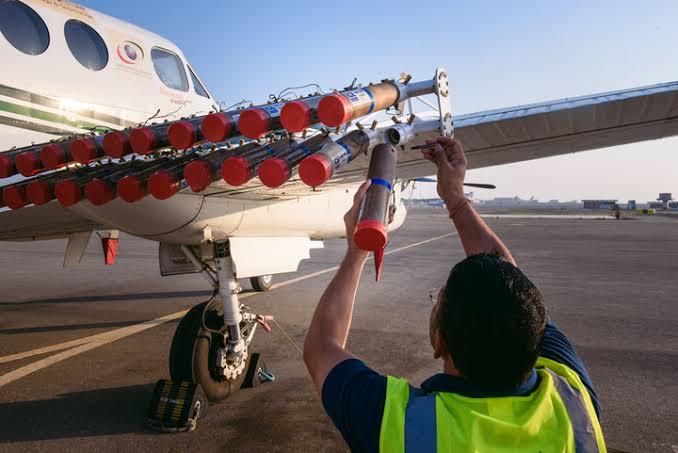
Cloud seeding aims to accelerate and facilitate the process of artificial raining
Cloud seeding is a type of weather modification technology to make artificial rainfall. The artificial rainfall works only when there are enough pre-existing clouds in the atmosphere. When the air reaches levels at which it can no longer be held, it starts raining. Cloud seeding aims to accelerate and facilitate that process by availing the chemical “nuclei” around which condensation can take place.
These ‘seeds’ of rain could be dry ice (solid carbon dioxide), iodides of potassium or silver, or liquid propane. These seeds can be taken via plane or even by just spraying from the ground.
Is cloud seeding used before?
Cloud seeding is not new to India. It has been attempted earlier in Andhra Pradesh, Karnataka and Maharashtra to fight drought. Australia, the USA, France, and Spain had also tried cloud seeding. The cloud seeding led to the creation of 52 storms in Abu Dhabi in the United Arab Emirates. As per the IMD (India Meteorological Department), 30 successful incidents of cloud seeding have been carried so far. Such seeding is a regular exercise in Russia and other cold countries where the technique is used to disseminate fog at airports.
Why we are talking about it?
The Scientists of IIT Kanpur have prepared a project to induce artificial rain through cloud seeding to clear smog in New Delhi caused after Diwali. Environment Ministry has cleared the air as the project has been approved. An aircraft of National Remote Sensing Agency- an ISRO-affiliated body, was needed in the project to fly into clouds and inject silver iodide that will lead to the formation of ice crystals. This will make the cloud denser and lead them to condense into rain, settling atmospheric dust also clearing the sky.
Read more: 7 Resume Mistakes that are a big turn off for employers
IIT Kanpur got clearance from Home ministries and DGCA for the project, way back in 2018. But it was the non-availability of the aircraft, which became the reason for failure in starting the project.
Who all have adapted cloud seeding?
Karnataka Cabinet approved a budget of Rs 91 crore for cloud seeding for a period of two years in May 2019. The project involved two aircraft spraying chemicals on moisture-laden clouds to induce rainfall. It was expected to begin by the end of June and run for three months. HAL (Hindustan Aeronautics Limited) had also partnered with IIT Kanpur. HAL agreed to provide Dornier aircraft with pilots to provide logistical support to the project.
Is the cloud seeding technology successful?
Indian Institute of Tropical Meteorology, a Pune-based Institute has been carrying out cloud seeding experiments for several years now. These experiments were carried out in Jodhpur, Hyderabad, Nagpur, Ahmedabad, Solapur and recently in Varanasi. The success rate of these experiments lies about 60 to 70 percent. However, it depends upon the amount of moisture in the air and cloud characteristics and depending on local atmospheric conditions.
Apart from IITM, few private companies also offer cloud-seeding services. These companies are the one engaged by Karnataka and Maharashtra in the last few years. These initiatives also received mixed success.
Have a news story, an interesting write-up or simply a suggestion? Write to us at info@oneworldnews.com








